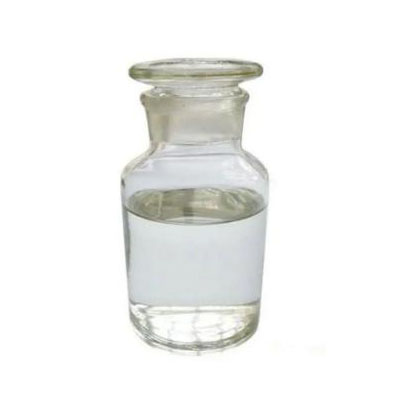- English
- Español
- Português
- русский
- Français
- 日本語
- Deutsch
- tiếng Việt
- Italiano
- Nederlands
- ภาษาไทย
- Polski
- 한국어
- Svenska
- magyar
- Malay
- বাংলা ভাষার
- Dansk
- Suomi
- हिन्दी
- Pilipino
- Türkçe
- Gaeilge
- العربية
- Indonesia
- Norsk
- تمل
- český
- ελληνικά
- український
- Javanese
- فارسی
- தமிழ்
- తెలుగు
- नेपाली
- Burmese
- български
- ລາວ
- Latine
- Қазақша
- Euskal
- Azərbaycan
- Slovenský jazyk
- Македонски
- Lietuvos
- Eesti Keel
- Română
- Slovenski
- मराठी
- Srpski језик
Are there any risks associated with working with Gamma Dodecalactone Cas 2305-05-7 in a manufacturing setting?
2024-11-22

What are the risks associated with working with Gamma Dodecalactone in a manufacturing setting?
Gamme Dodecalactone is not considered to be a hazardous material if handled properly. However, like any other organic compound, it can pose some risks in a manufacturing setting. Some of the potential risks include:
- Fire Hazard: Gamma Dodecalactone is highly flammable and may ignite if exposed to heat or flame.
- Inhalation: Inhaling Gamma Dodecalactone vapor or mist can cause respiratory irritation. It is essential to wear personal protective equipment like a respirator when working with this compound.
- Skin Irritation: Gamma Dodecalactone can cause skin irritation and may lead to dermatitis. It is essential to wear gloves when working with this compound and avoid direct skin contact as much as possible.
How can the risks associated with Gamma Dodecalactone be minimized in a manufacturing setting?
To minimize the risks associated with Gamma Dodecalactone in a manufacturing setting, employers can take several steps, including:
- Providing Training: Employees who work with Gamma Dodecalactone should receive proper training on handling, storing, and disposing of the compound.
- Implementing Safety Programs: The company should implement safety programs to ensure that employees and the environment are protected from potential hazards.
- Using Personal Protective Equipment: Employers should provide personal protective equipment like gloves, respirators, and safety glasses to employees when working with Gamma Dodecalactone.
- Proper Ventilation: To avoid inhaling the vapor or mist of Gamma Dodecalactone, the work area should have adequate ventilation.
What are the benefits of working with Gamma Dodecalactone in a manufacturing setting?
The benefits of using Gamma Dodecalactone in a manufacturing setting include:
- Enhancing flavor and scent: Gamma Dodecalactone offers a creamy, sweet, and coconut-like flavor and scent to various products like ice cream, candy, and baked goods.
- Availability: Gamma Dodecalactone is widely available, making it easy to use in the manufacturing industry.
- Cost-effectiveness: Compared to other similar organic compounds, Gamma Dodecalactone is cost-effective and provides a wide range of applications in the manufacturing industry.
In conclusion, Gamma Dodecalactone Cas 2305-05-7 is a widely used organic compound in the fragrance, flavor, and manufacturing industry. Although it can pose some risks, these risks can be minimized by implementing proper safety procedures, providing adequate training and using personal protective equipment.
Kunshan Odowell Co.,Ltd. is a leading organic compound supplier in China, providing high-quality organic compounds like Gamma Dodecalactone Cas 2305-05-7. With over ten years of experience in the industry, our company provides reliable and safe products to our customers. Visit our website https://www.odowell-biotech.com to learn more about our products and services or contact us at Shirleyxu@odowell.com for further inquiries.
Scientific Research Articles on Gamma Dodecalactone
1. Waghmare, J., Singh, P., Lapsure, R., & Laddha, K. (2019). Synthesis and evaluation of antimicrobial activity gamma-dodecalactone-based 1, 3-oxazines. Journal of Chemical Sciences, 131(2), 11.
2. Smit, B. A., Engels, W. J. M., Willemsen, M. C., Smit, G., & Nierop Groot, M. N. (2018). A microcalorimetric study of the solubilisation of gamma-decalactone in mixed micelles containing milk proteins. Food Research International, 106, 820-825.
3. Chen, X., Dai, Y., Zhang, J., Huang, H., Yang, Y., Chen, J., & Liu, X. (2017). Identification of Odor-Active Compounds in Gamay Wine Using Gas Chromatography-Olfactometry and Investigation of Their Key Impacting Variables. Journal of Agricultural and Food Chemistry, 65(50), 11102-11111.
4. Phuangkaew, J., Matta, F., Srichana, T., Clarke, R. J., & Cheirsilp, B. (2015). Effect of spore concentration and inoculation method on the production of volatile compounds by Lactobacillus plantarum. Food Control, 51, 130-138.
5. Cserháti, T., Forgó, P., & Lemberkovics, É. (2013). Composition and Antimicrobial Activity of Lemon Balm Essential Oil and Hydrocarbon-Free Super Critical Carbon Dioxide Extract. Journal of Essential Oil Bearing Plants, 16(6), 717-728.
6. Lapsure, R., & Ramanna, S. (2012). The Chemistry and Bioactivity of Fragrances and Flavors. Lambert Academic Publishing.
7. Ullah, R., Nisar, M., & Ali, F. (2011). Odor Detection Threshold Values of some Flavor Materials in an Aqueous Medium. Pakistan Journal of Analytical & Environmental Chemistry, 12(2), 38-42.
8. Rilova, M. C., Pérez-Silanes, S., García-Moreno, M. V., & González-Gómez, D. (2010). Sensory and Chemical Evaluation of Macrobrachium rosenbergii Tails Sauce as Affected by the Addition of Yoghurt and Spices. Journal of Aquatic Food Product Technology, 19(3-4), 261-278.
9. Barros, F., Fernandes, H., Soares, J., & Barros, L. (2006). Flavorings and Sensory Analysis. Journal of Rapid Methods and Automation in Microbiology, 14(2), 295-311.
10. Ali, A. M., Mohd Zawi, N. H., & Hassan, N. A. (2003). Extraction and Characterization of Volatile Compounds from Pineapple (Ananas comosus) Fruit Using Solvent Extraction, Solid Phase Microextraction and Headspace Technique. Journal of Food Science and Technology, 40(2), 187-192.



